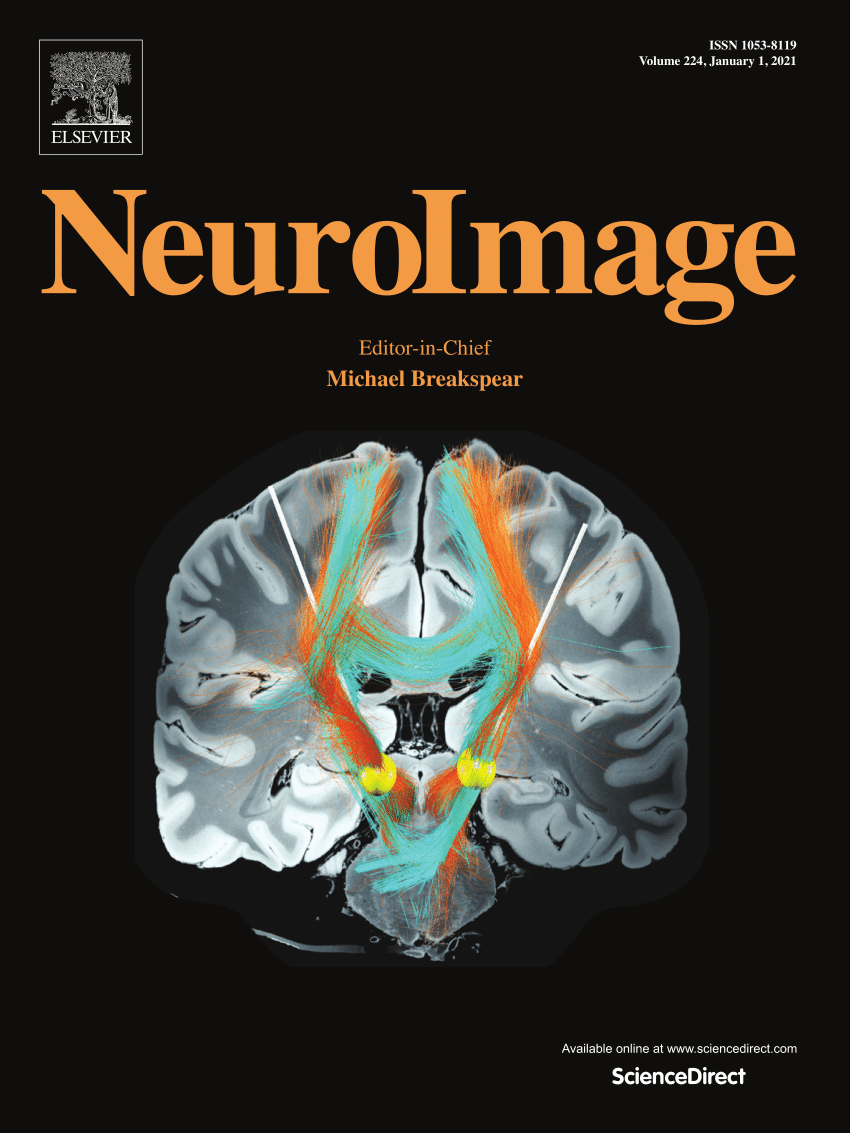Dysregulated neurofluid coupling as a new noninvasive biomarker for primary progressive aphasia
IF 4.5
2区 医学
Q1 NEUROIMAGING
引用次数: 0
Abstract
Accumulation of pathological tau is one of the primary causes of Primary Progressive Aphasia (PPA). The glymphatic system is crucial for removing metabolite waste from the brain whereas impairments in glymphatic clearance in PPA are poorly understood. Thus, this study aims to investigate the role of dysregulated macroscopic cerebrospinal fluid (CSF) movement in PPA. Fifty-six PPA individuals and ninety-four healthy controls were included in our analysis after excluding those with excessive head motions during the scan. The coupling strength between blood-oxygen-level-dependent (BOLD) signals in the gray matter and CSF flow was calculated using Pearson correlation and compared between the groups. Its associations with clinical characteristics including scores from Clinical Dementia Rating (CDR), Mini-Mental State Exam, Geriatric Depression Scale and with morphological measures in the hippocampus and entorhinal cortex were examined. PPA subjects exhibited weaker global BOLD-CSF coupling compared to HCs, indicating impairments in glymphatic function in the patients (p = 0.01). In the PPA but not HC group, global BOLD-CSF coupling correlated with the CDR scores (p = 0.04) and hippocampal volume (p = 0.009). The observed decoupling between global brain activity and CSF flow and its association with symptomatology and brain structural changes in PPA converges with previous reports on the same measure in other neurodegenerative diseases. These findings support the potential role of global BOLD-CSF coupling as a noninvasive marker for glymphatic dysregulation in PPA.
神经流体耦合失调是原发性进行性失语症的一种新的无创生物标记物
病理性 tau 的积累是原发性进行性失语症(PPA)的主要病因之一。脑 glymphatic 系统对清除大脑中的代谢废物至关重要,但人们对 PPA 中的脑 glymphatic 清除障碍还知之甚少。因此,本研究旨在探讨宏观脑脊液(CSF)运动失调在 PPA 中的作用。在排除了扫描过程中头部过度运动的患者后,我们对 56 名 PPA 患者和 94 名健康对照者进行了分析。我们使用皮尔逊相关法计算了灰质中血氧浓度依赖性(BOLD)信号与脑脊液流动之间的耦合强度,并对各组之间的耦合强度进行了比较。研究还考察了BOLD信号与临床特征(包括临床痴呆评分(CDR)、迷你精神状态检查、老年抑郁量表)的关系,以及与海马和内侧皮层形态学测量的关系。与 HC 相比,PPA 受试者表现出更弱的全局 BOLD-CSF 耦合,这表明患者的脑功能受损(p = 0.01)。在 PPA 组而非 HC 组,全局 BOLD-CSF 耦合与 CDR 评分(p = 0.04)和海马体积(p = 0.009)相关。在 PPA 中观察到的全局脑活动与 CSF 流量之间的脱钩及其与症状和脑结构变化之间的关联,与之前有关其他神经退行性疾病中相同测量指标的报道一致。这些发现支持了全局 BOLD-CSF 耦合作为 PPA 中脑浆失调的非侵入性标记的潜在作用。
本文章由计算机程序翻译,如有差异,请以英文原文为准。
求助全文
约1分钟内获得全文
求助全文
来源期刊

NeuroImage
医学-核医学
CiteScore
11.30
自引率
10.50%
发文量
809
审稿时长
63 days
期刊介绍:
NeuroImage, a Journal of Brain Function provides a vehicle for communicating important advances in acquiring, analyzing, and modelling neuroimaging data and in applying these techniques to the study of structure-function and brain-behavior relationships. Though the emphasis is on the macroscopic level of human brain organization, meso-and microscopic neuroimaging across all species will be considered if informative for understanding the aforementioned relationships.
 求助内容:
求助内容: 应助结果提醒方式:
应助结果提醒方式:


